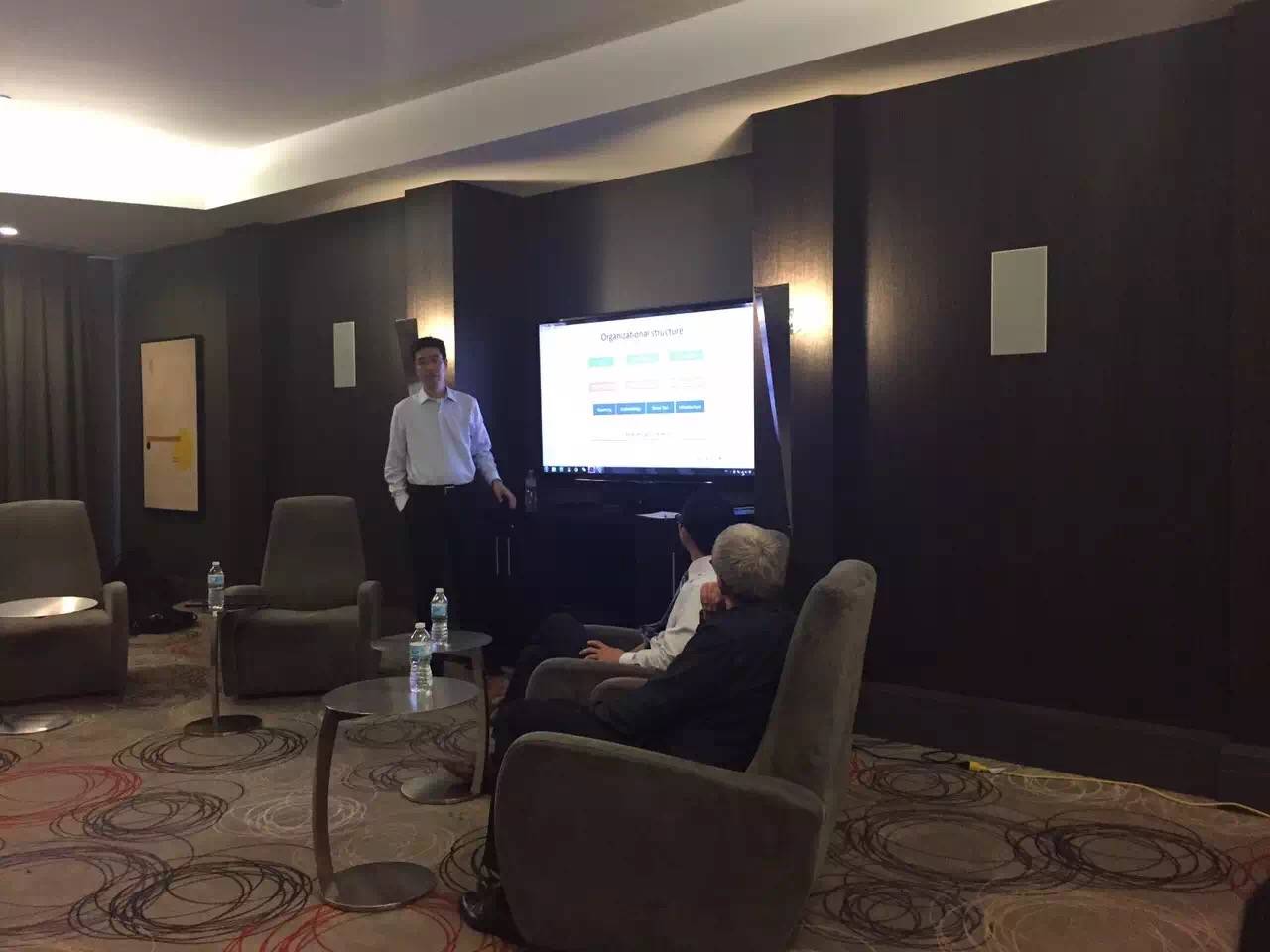On August 19th, NHC continued the risk salon program with the topic on Enterprise Market Risk. The panel speakers included Devin Luo, Manager at RBC Enterprise Market Risk, Bruce Zhao, Director at Scotiabank Market Risk and our old friend Dmitri Rubisov, Managing Director from BMO Capital Market.
In the beginning, Devin introduced different functions of the RBC enterprise market risk team and its relationship with trading desks. Mentioning that the regulators, and specifically OSFI, continue to introduce more regulations on financial institutions, Devin explained how his infrastructure group has been dealing with the OSFI requirements. Then Devin spoke about VaR (Value at Risk) and specific usages of VaR. To demonstrate the importance of VaR in financial reports, Devin showed a table from RBC financial statement with VaR figures, after which he explained how banks compute and use VaR. Bruce pointed out that VaR figure is smaller for Scotiabank. In addition, Dmitri mentioned that VaR is always computed at the end of day and that the closing time is different for regions with different time zones (examples BMO Europe, BMO China).
 When VaR is reported, it consists of general and idiosyncratic components. In the past the idiosyncratic component was only calculated for equities. Speaking of recently introduced DSR (Debt Specific Risk), Devin explained that it is the idiosyncratic component in corporate spreads that cannot be captured if general rating spread curves are used without single name spreads.
When VaR is reported, it consists of general and idiosyncratic components. In the past the idiosyncratic component was only calculated for equities. Speaking of recently introduced DSR (Debt Specific Risk), Devin explained that it is the idiosyncratic component in corporate spreads that cannot be captured if general rating spread curves are used without single name spreads.
In computing VaR, BMO uses Monte Carlo Simulation while other big Canadian banks use historical method. Both methods have advantages and disadvantages. Using Monte Carlo method has to assume certain models that may potentially create unrealistic scenarios, while using historical simulation relies on a very limited amount of data and therefore can be less accurate. According to McKinsey’s report “Managing market risk: Today and tomorrow” in 2011, 75% of financial institutions use historical simulation while 15% of financial institutions use Monte Carlo Simulation and the other 10% use a hybrid of the two, based on the reported sample. Dmitri also mentioned that VaR is used to be recalibrated quarterly, but it needs to be calibrated every two weeks now due to stricter requirements from the regulators.
Going back to the definition of VaR, Devin said that VaR is a single number that is very easy to understand, but it has certain disadvantages. One of them is the dependence of VaR on historical data, due to which VaR is slow to react to fast market changes as became evident during the financial crisis of 2007-2008. To overcome this shortcoming of VaR, stressed VaR is now computed using data from the most volatile period during the financial crisis. Another disadvantage is that VaR does not show the size of loses when they are extreme. That’s why banks are now required to calculate conditional VaR (also called expected shortfall).
The problem with expected shortfall is its backtesting, while backtesting of VaR is well established and easy. Devin mentioned that backtest breaches are required to be reported to OSFI. There is the maximum number of breaches per year after which the VaR model is not accepted any more. The best case for the financial institution is to have the number of backtest breaches slightly below the maximum accepted by OSFI. In that case, the model is approved but the VaR (and therefore VaR based capital) is not overstated. No breaches is bad because it means that VaR is too high. Just below 4 breaches per year is the best outcome for the bank.
The panellists also discussed other risk metrics calculated to complement VaR, such as stress tests and IRC (Incremental Risk Charge). IRC was recently introduced with the intention to capture both default risk and credit rating migration risks in trading portfolios. IRC is calculated on a one year horizon because capturing defaults and migrations is not possible when VaR is calculated on a one day time horizon.

